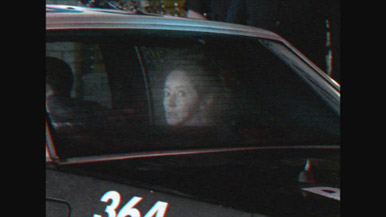Movie Review: The Devil Inside
By Matthew Huntley
January 12, 2012
BoxOfficeProphets.com

Like The Blair Witch Project and Paranormal Activity, the movie pretends to be a compilation of real-life footage just to get a rise out of us, only it fails. It is presented as a 2009 documentary about a twentysomething girl named Isabella Rossi (Fernanda Andrade) who travels to Rome to visit her mother, Maria (Suzan Crowely). Maria has been living in a mental hospital for the past 20 years after she was found not guilty for reason of insanity for killing three people - two priests and a nun - in 1989. Allegedly, Maria murdered them during an exorcism and Isabella is now on a quest to learn more about the controversial ritual and to find out the truth about her mother, perhaps even help her.
In Rome, Isabella visits an exorcism school (which I’ve come to learn actually do exist), where members of the clergy debate whether demonic possession is real or just a mental disorder. Two priests, Ben (Simon Quarterman) and David (Evan Helmuth), are convinced of the former and reveal to Isabella they’ve been secretly going outside the church’s authority and performing exorcisms on patients they believe need their help. They invite Isabella and her cameraman, Michael (Ionut Grama), to watch one and argue they can learn more by witnessing the first few minutes of an exorcism than merely debating about one in a classroom.
It’s right around here where the movie loses focus and abandons the implications of exorcisms and instead concentrates on cheap shocks, hackneyed gimmicks and overt sensationalism. It’s as if director William Brent Hill thinks these are the only things we’ve come to see. We get the possessed woman who contorts her body into various positions by breaking her joints, yells sexual obscenities at the priests, and climbs the walls like a spider. But we’ve seen and heard this all before, including in the original Exorcist, and they’re no longer interesting or creepy. Did Hill, who co-wrote the screenplay with Matthew Peterman, simply make a bullet points list of all the lurid imagery common to exorcist movies and decide to make them the focal point of his own? None of them are original and the re-hashing seems almost deliberate.
What Hill doesn’t realize is that it’s not the images that frighten us as much as the ideas and unknown answers of what might be allowing possessed people to act the way they do. It’s the mystery and theories that scare us, of which this movie has none; the filmmakers expect us to just bask in the special effects, as if they’re enough. But special effects have no meaning if there’s no substance behind them.
After the exorcism proves successful, Isabella asks Ben and David to do the same for her mother, although it becomes apparent Maria’s case isn’t as straightforward. Isabella and the priests are convinced Maria is possessed - she has inverted crosses cut into her arms and bottom lip; she speaks with a strange accent; and she somehow knows her daughter terminated a pregnancy, which, she mutters, “goes against God’s will.” When they attempt to analyze her, all hell breaks loose and certain characters start acting strangely, suggesting some sort of demonic transference.
The movie proceeds down its dull and uninspired path until the goofball ending, which, for anyone who has the slightest investment in the characters, is a real kick in the teeth. It teases us for teasing’s sake and we’re left with nothing but a cheap marketing ploy before the end credits. The ending had me asking, “That’s it?!”, while my overall reaction to the The Devil Inside was that it was just a cheap, device-laden knock-off of a far superior film. It doesn’t build any tension or offer any insight into the world of exorcisms, even though it had an opportunity with the school and by taking place in Rome, where the Catholic Church serves as an intriguing, and strangely menacing, backdrop.
Have the filmmakers no shame or humility? Would it have killed them to come up with an original angle to the exhausted exorcism-movie premise? Apparently it was just easier to steal from the master and toss in some updated effects. If you’re a horror movie fan, do yourself a favor and revisit The Exorcist. Don’t get suckered into seeing The Devil Inside.